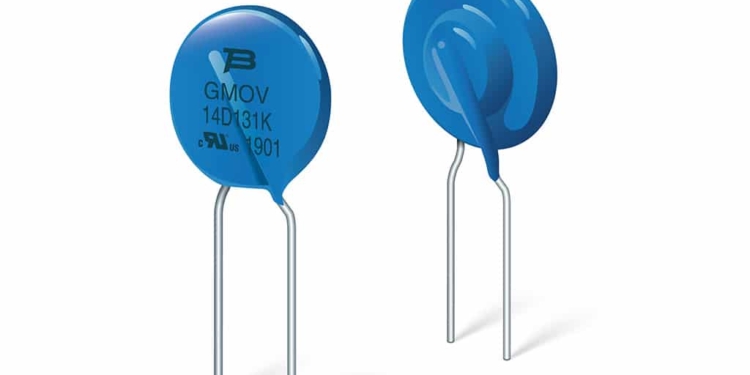Source: Bourns news
RIVERSIDE, Calif., April 29, 2019 – Bourns, Inc., a leading manufacturer and supplier of electronic components, today introduced the company’s GMOV™ line of overvoltage protection components. Bourns’ innovative hybrid design combines its patented, space-saving Gas Discharge Tube (GDT) with FLAT® technology with a Metal Oxide Varistor (MOV) to create a compact and enhanced overvoltage protector that is a drop-in replacement for standard 14 and 20 mm MOVs.
Bourns designed its new GMOV™ family to be an enhanced protection solution that helps overcome degradation and catastrophic failure issues that can occur in discrete MOVs that are subjected to transient surges or temporary overvoltage exceeding their maximum rated values. The GDT is used to isolate the MOV from the line voltage so it remains “on call but not on duty” thereby shielding it from transients and temporary overvoltage spikes that typically damage the MOV over time. Another significant benefit of combining the two technologies is that the GMOV™ device offers ultra-low leakage (<0.1 µA) helping to reduce damage due to watt loss heating. The result is a higher reliability protection solution with virtually zero standby energy consumption.
Overvoltage protection remains a consistent requirement to guard against unstable electrical service swells, switching and lightning voltage transients. MOVs are popular overvoltage protection devices, but they are susceptible to degradation and failure issues in certain harsh and uncontrolled environment applications. Failure can occur from a thermal runaway condition, which defines a MOV’s lifespan. Thermal runaway conditions can also increase the risk of fire in an MOV to be fire hazards prompting designs to typically require additional fusing or thermal cutoff devices for safety.
Bourns® GMOV™ components cost-effectively improve application reliability by providing a predictable failure mode. This removes the need for indication circuitry and more expensive thermally protected MOV devices. Another advantage is that GMOV™ protectors help to eliminate the need for more costly and higher performance MOVs to meet UL1449 lost neutral tests. And importantly, GMOV™ devices offer a higher level of safety, consistently blowing fuses and breakers compared to MOVs alone, for extended voltage threats.
Available now, Bourns® GMOV™ components are offered in 14 and 20 mm versions with maximum continuous operating voltage ratings from 45 Vrms to 320 Vrms. The 14 mm version has a maximum surge current rating of 6 kA, while the 20 mm version has a 10 kA maximum surge current rating. The Bourns® GMOV™ family is UL 1449 Type 5 recognized and RoHS compliant*.
For more detailed information about the benefits Bourns® GMOV™ devices can provide, please see the white paper here.


































